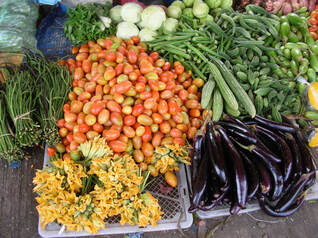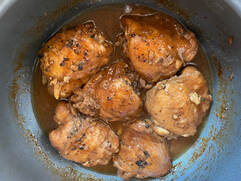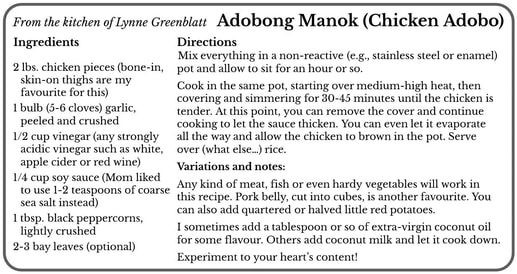
This month, “Diversity in the Kitchen” features the Philippines, my native country. Born and raised in Manila, my parents, younger brother and I moved to Wolfville, NS, when I was in high school. We lived there for a few years until we moved to the U.S., where I finished university and spent my career as a research scientist. I never forgot my love for the Maritimes and the Bay of Fundy area. For more than 30 years, we visited my sister and her family in Waterside almost every summer. My husband and I are now happy to have made our permanent home in Waterside!
Filipino food centers on fresh and local ingredients. Thanks to the tropical climate and the surrounding ocean, you will find lots of seafood and a dizzying array of tropical fruits and vegetables on the menu. Pork, chicken and, to a lesser extent, beef are also popular. The Philippines is also a rice-producing nation, so rice is the staple of choice. Because refrigeration can be scarce in the rural areas, meats and seafood are preserved by curing, salting, drying, smoking or pickling/fermenting, resulting in strong, distinct flavours.
One of my favourite activities as a child was to accompany my mom on her shopping trips to the wet market to pick out ingredients for the next several meals. I still remember the sensory overload – the smells, the colours, the cacophony of vendors hawking their wares and customers haggling over prices… I make it a point to visit a wet market, as shown in the picture, whenever I go back to the Philippines. (A wet market sells fresh meats, fish, produce and other perishable goods, as opposed to a dry market that sells durable goods such as fabrics, plastics, housewares, electronics, etc. Supermarkets are now mainstream in the larger cities, but most rural areas and even sections of the cities still have thriving wet markets.)
Everyday food tends to be simple, based on whatever happens to be available. In general, a small amount of protein (fish, shellfish, chicken or pork) is sautéed or stewed with a variety of fresh local vegetables and/or fruit. Commonly, sautéing is done with a “sofrito” of garlic, onions and tomatoes. Other common seasonings include ginger, vinegar, coconut milk, fish sauce, soy sauce and a variety of fermented fish or seafood pastes, which are definitely an acquired taste not immediately appreciated by westerners.
Festive occasions call for more elaborate preparation. At a Filipino party, you might find Filipino style egg rolls (lumpia), several types of noodle dishes (pancit), stewed goat (kaldereta), maybe a fish or seafood dish such as escabeche (fried fish in a sweet-sour gingery sauce), and, if you’re lucky, the king of party dishes, lechon (whole roast suckling pig). Side dishes might include salads of seaweed and tomatoes, bitter melon and tomatoes, pickled green papaya and green mango. And, of course, lots and lots of steamed rice.
The classic Filipino dish is adobo. Ask any Filipino – they will undoubtedly tell you their mom made the best adobo ever. I know my mom did! Many cultures have their own versions of adobo, since the term is derived from Spanish for “marinate.” The version I will share though, is uniquely Filipino. It is incredibly simple to make – I learned to make it at my mother’s knee somewhere around age four or five. I would mix everything in the pot, and she would put it on the stove for me. Later, when I was tall enough to reach the burners, she taught me the rest of her culinary secrets – how to make up stuff on the fly, use any available ingredients and cook by the senses – smell, taste, feel, sight and sound. I owe my love of food and cooking to my mom, who managed to feed 13 kids healthy, nutritious meals on a budget.


 RSS Feed
RSS Feed